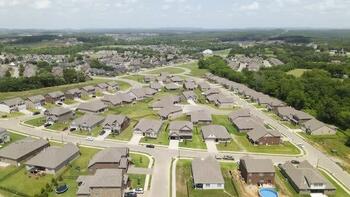
What if I told you that Chicago is a midsized, dense urban hub of 800,000 people, surrounded by more than 400 suburbs anchoring a large metro area of 9.5 million? Or that Indianapolis reached its peak population of 476,000 in 1960, and has slipped below 300,000 for the first time since 1930? Or that New York City reached its population peak of 3.4 million in 1950, lost nearly a million people to fall to 2.6 million by 1980, and once again crossed the 3 million person threshold just this past decade?
If each had kept their late 19th century boundaries, that would’ve been the case. Our views of each city would be quite different today. Chicago might be viewed as an urban core lending its name to a giant metro area, similar to Atlanta or D.C. Indianapolis would be less likely to be seen as a Midwestern success story, and more likely to be seen in the same vein as St. Louis. A New York City that didn’t include Brooklyn, Queens or Staten Island may have found itself fighting for supremacy (with Brooklyn) in the state, never mind the nation or the world as a global city, and never gained its full Big Apple allure.
I know it’s a stretch, even absurd to consider. But I raise this to say that impressions of cities depend greatly on the boundaries set by the cities themselves.
I often ask “what if” questions regarding cities. What if, for example, a city like St. Louis or Philadelphia had been able to spread beyond their current boundaries? Would the difference in population size lead to different thoughts of what each city had become? St. Louis and Philadelphia have had their current city boundaries for more than 140 years. The City of Philadelphia consolidated with Philadelphia County in 1854, and St. Louis city seceded from St. Louis County in 1877. They’ve both seen very urban-like suburbs develop at their edges; lands that could’ve been incorporated into their environs.
On the flip side, Chicago, via aggressive annexation 130 years ago, and Indianapolis, through city/county consolidation, sought to raise their profiles by capturing their suburbs. Chicago’s annexation was spurred by its attempts to become the U.S.’ largest city, surpassing New York (it almost did, but New York’s own consolidation that brought in three boroughs beyond Manhattan and the Bronx in 1898 put the title out of Chicago’s reach). Indianapolis was a relatively sleepy state capital of a midsized Midwestern state that saw consolidation as a way to improve its standing as a player among large cities – and solidify Republican control within local government. It was successful on both fronts.
Many of today’s biggest Sun Belt cities play the same game once played by far older cities. Surrounded by wide expanses of unincorporated land, cities in the South and West jump at the chance expand their physical footprint. In the case of annexation, it’s usually done to extend municipal services, like water, to places that lack them. The usual rationale for consolidation is to streamline and better coordinate municipal services for taxpayers. But let’s be real – annexations and consolidations are efforts by cities to redefine economic and media markets to improve their chances at appealing to business for relocations, Fortune 500 headquarters, expanded airports and sports teams.
Jacksonville, Oklahoma City, Houston and Phoenix each rank among the largest cities in the U.S. by land area, all over 600 square miles. It does not matter that each is larger than all of Wayne County, Michigan, which includes Detroit and numerous suburbs. Only Houston (2.3 million) has more than all of Wayne County (1.7 million), but annexation or consolidation gives each a chance to stake larger claims. However, this isn’t simply a tactic of urban hubs. I’m reminded of Aurora and Joliet, IL, two small manufacturing cities roughly 40 miles outside of Chicago who witnessed suburban sprawl heading in their direction. Both cities gobbled up as much land as they could through annexation to build new subdivisions and commercial centers, changing the perceptions, and tax base, of their respective cities.
Read the rest of this piece at Corner Side Yard Blog.
Pete Saunders is a writer and researcher whose work focuses on urbanism and public policy. Pete has been the editor/publisher of the Corner Side Yard, an urbanist blog, since 2012. Pete is also an urban affairs contributor to Forbes Magazine’s online platform. Pete’s writings have been published widely in traditional and internet media outlets, including the feature article in the December 2018 issue of Planning Magazine. Pete has more than twenty years’ experience in planning, economic development, and community development, with stops in the public, private and non-profit sectors. He lives in Chicago.












